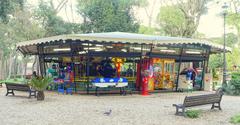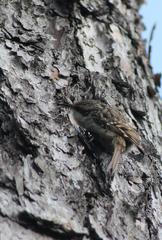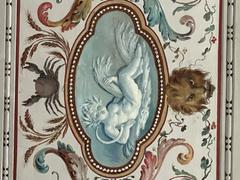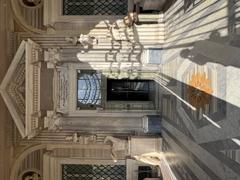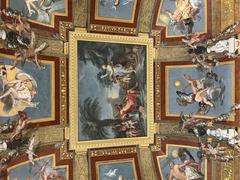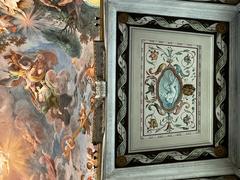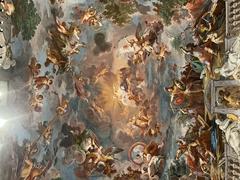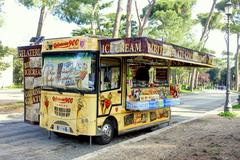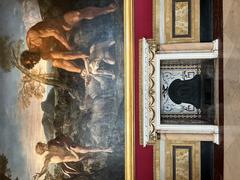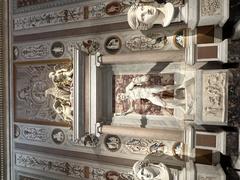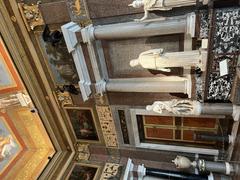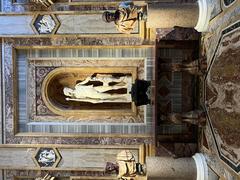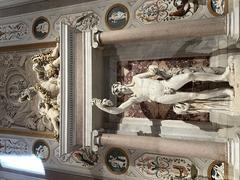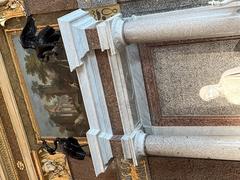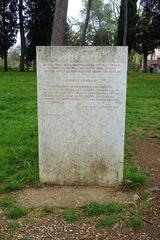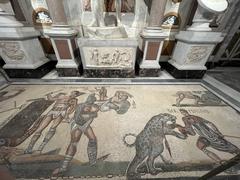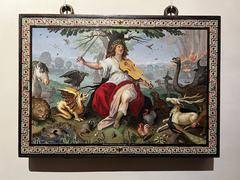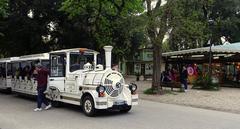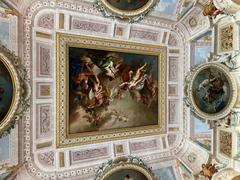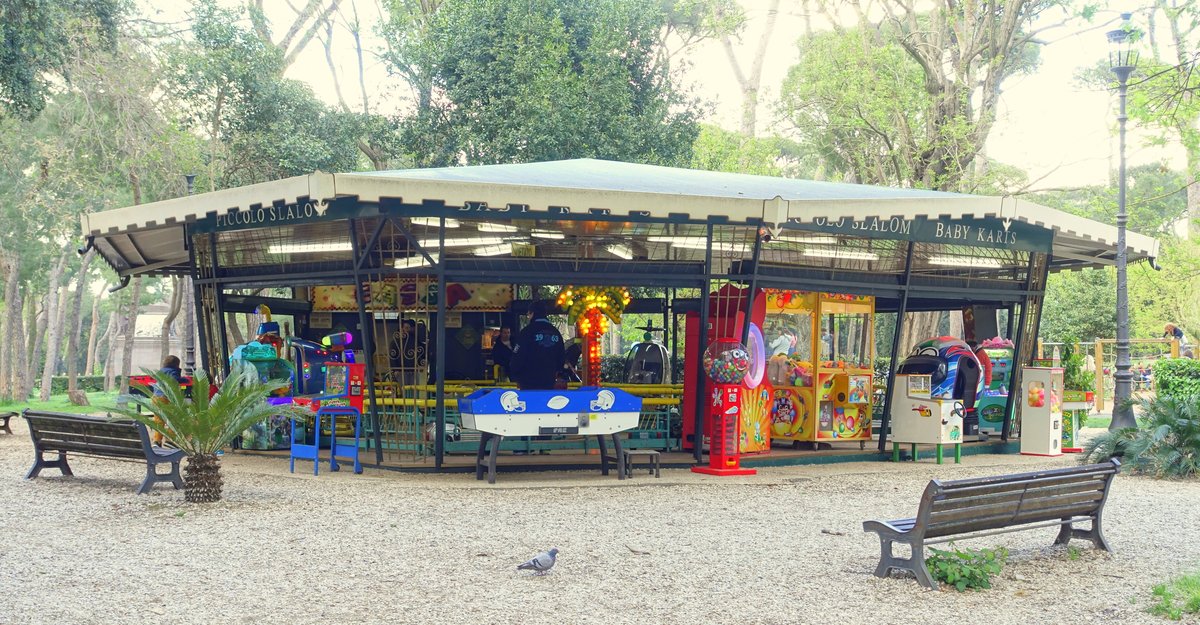
Villa Borghese Gardens Rome: Visiting Hours, Tickets, and Attractions Guide
Date: 14/06/2025
Introduction
Nestled in the heart of Rome, Villa Borghese Gardens represents one of the city’s most cherished green spaces, seamlessly blending centuries of art, history, and horticultural excellence. Originally designed in the early 17th century by Cardinal Scipione Borghese—a renowned art collector and nephew of Pope Paul V—the estate was intended as an opulent villa surrounded by formal gardens to display the Borghese family’s art collection and to serve as a tranquil retreat from the city’s bustle (Stefano Rome Tours). Today, the gardens span roughly 80 hectares, making them Rome’s third-largest public park and a dynamic “museum park” that houses world-class museums, offers diverse landscapes, and hosts cultural events year-round (archeoroma.org; travelgreecetraveleurope.com).
This guide provides a detailed overview of Villa Borghese Gardens—covering its history, main attractions, opening hours, ticketing, accessibility, travel tips, and nearby sites—to help you plan an enriching and memorable visit.
Historical Background
Origins and Early Development
Villa Borghese Gardens was conceived at the dawn of the 17th century, a period when Baroque art and architecture flourished in Rome. Cardinal Scipione Borghese commissioned architect Flaminio Ponzio to design the lavish villa (Casino Nobile) and its surrounding gardens, transforming what was once vineyards and fields into a showcase of art and nature (Stefano Rome Tours; Rome Travelogues). Over time, the estate expanded, acquiring additional parcels to become the vast landscape visitors enjoy today.
Expansion, Public Ownership, and Cultural Significance
The Borghese family continually enhanced the estate, introducing exotic plants, fountains, and new pavilions. The Temple of Aesculapius, built in the 18th century on a picturesque lake island, stands as one of the park’s most iconic landmarks (Rome Travelogues). Following the decline of the Borghese family and the unification of Italy, the estate was sold to the Italian government in 1901 and opened to the public shortly after (Stefano Rome Tours). This transition played a pivotal role in democratizing access to green spaces and art in Rome.
The gardens have since hosted numerous cultural events, including the International Horse Show at Piazza di Siena, open-air concerts, and seasonal festivals, establishing Villa Borghese as a central hub of Roman cultural life (quodlibetroma.com).
Main Attractions
Galleria Borghese (Borghese Gallery)
Housed in the original Casino Nobile, the Galleria Borghese is renowned for its exceptional collection of Renaissance and Baroque masterpieces, featuring works by Caravaggio, Bernini, Raphael, Titian, and Canova (travelgreecetraveleurope.com). The gallery requires advance booking due to strict visitor limits.
Bioparco di Roma (Rome Zoo)
Located in the northern part of the gardens, Bioparco is one of Europe’s oldest zoos, home to over 1,000 animals from 200+ species. The zoo focuses on conservation, education, and family-friendly activities.
Pincio Terrace
This neoclassical terrace at the park’s southern edge offers panoramic vistas over Rome and Piazza del Popolo, making it a favorite spot for sunset views (Rome.us).
Temple of Aesculapius and Laghetto
The artificial lake, with its picturesque Temple of Aesculapius, is ideal for rowing, photography, and relaxation.
Museo Carlo Bilotti and Other Museums
The park is dotted with museums such as Museo Carlo Bilotti, Museo Pietro Canonica, and the Galleria Nazionale d’Arte Moderna e Contemporanea, each contributing to the garden’s status as a “museum park” (archeoroma.org).
Other Highlights
- Villa Medici: The French Academy in Rome, renowned for its gardens and art residencies.
- National Gallery of Modern and Contemporary Art: Italy’s largest collection of 19th- and 20th-century art.
- Theatres and Cultural Venues: Including Casa del Cinema and the Globe Theatre, which host performances and screenings year-round.
Practical Visitor Information
Opening Hours & Entry
- Gardens: Open daily from dawn to dusk (typically 7:00 AM to sunset). Entry is free (Visit Borghese Gallery).
- Galleria Borghese: Open Tuesday to Sunday, 9:00 AM–7:00 PM; closed Mondays. Advance booking required (galleriaborghese.beniculturali.it).
- Other Museums: Generally open 10:00 AM–6:00 PM; closed Mondays. Check individual websites for details.
Tickets
- Gardens: Free entry.
- Galleria Borghese: ~€15–€20 for adults, €3 for EU citizens aged 18–25, free for children under 18. A €2 reservation fee applies. Advance booking is mandatory.
- Bioparco di Roma: Separate paid entry; tickets available online or at the entrance.
- Other Museums: Fees and opening hours vary.
Accessibility
- The main paths are paved and wheelchair accessible. The Borghese Gallery and most museums provide facilities for visitors with reduced mobility. Some entrances may have steps (Pincio), so check accessible routes in advance (Visit Borghese Gallery).
- Strollers are generally welcome, but some areas are uneven.
Getting There
- By Metro: Closest stations are Spagna (Line A, near the Spanish Steps) and Flaminio (Line A, near Piazza del Popolo) (Wandermust Family).
- By Bus: Numerous lines serve the park. Buses 223, 910, 53, 63, 83, 92, and 360 stop near the Borghese Gallery (Visit Borghese Gallery).
- By Foot: Easily accessible from the Spanish Steps, Piazza del Popolo, and Via Veneto.
Park Facilities
- Restrooms: Public toilets are available at several locations.
- Cafés and Restaurants: Multiple options throughout the park, though prices may be higher.
- Picnic Areas: Bring your own food—picnicking is encouraged.
- Playgrounds: Especially near Porta Pinciana, ideal for families.
- Bike & Boat Rentals: Rent bikes, e-bikes, and rowboats near the lake (Visit Borghese Gallery).
Tips for an Enjoyable Visit
- Best Time to Visit: Early mornings, late afternoons, and weekdays are quieter. Spring and autumn offer pleasant weather and beautiful foliage (Merryl’s Travel & Tricks).
- Wear Comfortable Shoes: Expect to walk extensively; paths can be uneven in spots.
- Bring Water and Sun Protection: Especially in summer.
- Photography: The gardens are especially photogenic at sunrise and golden hour.
Events and Guided Tours
- Special Events: Open-air concerts, art fairs, and the prestigious International Horse Show at Piazza di Siena are held throughout the year (Rome Travelogues).
- Guided Tours: Available for Galleria Borghese, Villa Medici, and more. Booking in advance is recommended for deeper insight and skip-the-line access (Visit Borghese Gallery).
Frequently Asked Questions (FAQ)
Q: What are the Villa Borghese Gardens opening hours?
A: The gardens are open daily from dawn to dusk. Exact times vary seasonally.
Q: How do I book Borghese Gallery tickets?
A: Book online in advance through the official gallery website or authorized vendors; walk-up tickets are rarely available.
Q: Is there an entry fee for the gardens?
A: Entry to the gardens is free; attractions like the Galleria Borghese and Bioparco require tickets.
Q: Are the gardens wheelchair accessible?
A: Most main paths and attractions are accessible, but some areas and entrances have steps—plan your route accordingly.
Q: Can I bring pets?
A: Dogs are allowed but must be kept on a leash. Owners must clean up after their pets.
Q: What is the best time to visit to avoid crowds?
A: Early mornings, late afternoons, and weekdays are generally less crowded.
Summary and Final Tips
Villa Borghese Gardens encapsulate Rome’s harmonious blend of history, art, and nature. From their origins as a private estate to their current role as a public cultural haven, the gardens offer a wealth of attractions—from the world-famous Galleria Borghese to tranquil lakes, lush landscapes, and vibrant events (Stefano Rome Tours; archeoroma.org).
For a seamless experience:
- Plan your route and prioritize key attractions.
- Book tickets for major sites well in advance.
- Consider guided tours for a richer understanding.
- Take advantage of the park’s central location to explore nearby landmarks like Piazza del Popolo and the Spanish Steps (Visit Borghese Gallery; Wandermust Family).
Villa Borghese is a must-visit for art lovers, families, and anyone seeking a peaceful yet vibrant slice of Roman culture. For updated information on hours, ticketing, and events, consult the official website and individual attraction pages.
Sources and Further Reading
- Stefano Rome Tours
- archeoroma.org
- travelgreecetraveleurope.com
- Rome Travelogues
- quodlibetroma.com
- Wandermust Family
- Merryl’s Travel & Tricks
- Visit Borghese Gallery
